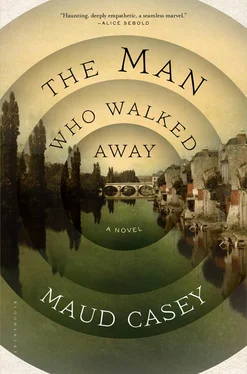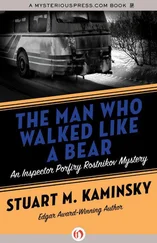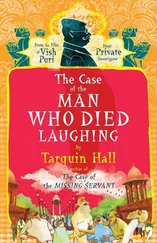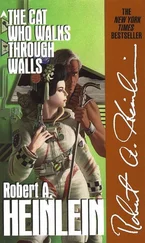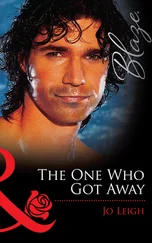“There he is,” Monsieur Eager announces, as though no one else can see. Everyone leans forward, an amphitheater of knees digging into an amphitheater of backs.
There he is, the humble son of a wagon maker, now the great doctor. The man who has been endlessly discussed and dissected, who has refashioned an ancient word until it is as exquisite and ornate as one of his father’s decorated carriages.
He is rotund. Stumpy. Tiny , really. The cast of the woman’s body is enormous next to him. It could swallow him whole. So this is all , thinks the Doctor. Even as he feels a small zing of satisfaction, he is disappointed.
But then the great doctor speaks.
“I hope I haven’t kept you waiting long.” His voice is a sturdy house into which he invites each one of them. Come in. Wander around. Take a look in my secret closets.
The audience laughs nervously, as though it is they who have kept him waiting.
“What, then, is hysteria? What is its nature? We know nothing about its nature. Nor about the lesions that produce it. We know it only through its manifestations. Be forewarned: I will not lead you down a well-delineated path.”
Dense and muscular, each word adds a centimeter to his height and removes one from his sizable girth. A grandeur hovers around him, a gentle Parisian mist. The Doctor feels the dewy wonder of it on his face; it washes away the smirks from the faces of any detractors.
“I have not pushed aside the thorny bushes that make this journey difficult,” the great doctor says. “This lecture is for the benefit of those among you who have not already completed your medical training. I have no embarrassment in finding my way in front of the rest of you.”
“He has the head of Napoleon,” Monsieur Eager whispers to his neighbor.
The comparison is apt but the Doctor knows, even as the spell is being cast, the close resemblance, that fierce elegance, is carefully cultivated.
“The girl we will examine today suffers from intermittent cramps, trembling, convulsive attacks, and the paralysis of her right leg,” the great doctor says. “For the past several days we have waited and watched. We have not interfered.”
“She is very fond of ether, I hear,” Monsieur Eager whispers.
“Is she clairvoyant?” whispers his companion with his aquiline nose. “I’ve heard some of them are clairvoyant.”
Shhh.
“You cannot claim to have really seen something until you have photographed it,” the great doctor says, gesturing to a tall, skinny man hovering in the corner, a pair of spectacles perched precariously on the top of his pointy head.
The tall, skinny man, in the midst of unfolding a tripod, appears to have been magically transported from the grand photography annex the Doctor has read about — a glass-walled studio, dark and light laboratories, a wealth of equipment. Platforms, beds, screens, backdrops in all colors, headrests that serve as vises for those patients who can’t hold still to allow a photographer to capture a close-up of ears, eyes, nose. There are rumored to be gallows from which to suspend those patients too distressed to hold themselves upright, which fold up tidily along the wall of the studio at the end of the day.
“ I am nothing more than a photographer,” says the great doctor, “inscribing what I see.”
But the great doctor is nothing like this photographer. Everyone in the amphitheater can see that. Beneath the camera’s black tenting, the photographer’s thin legs are indistinguishable from the thin legs of the tripod; from time to time mistaken for the spindly wooden legs of an inanimate object — a piano, for example. His shins are bruised because just the other night, in a restaurant where he’d gone with his wife, someone distractedly and repeatedly swung a foot under a table, mistaking his legs for those of a chair.
“Why you say nothing,” his wife said when he showed his bruised shins to her later, “is the bigger question.”
The bigger question is easily answered. The photographer prides himself on his talent for fading into the background. It is an art, blending into a room until he is a small flake of paint on the wall, a splinter of wood in the floor, a dust mote in the air. The great doctor wants him to find proof of what he is looking for but the photographer isn’t after proof, he is after the question of the spirit enacted in the anatomy, that smoky ghost caught just for a moment in flesh and bone. Before the photographer became a photographer, he had gone to medical school. He had been on his way to becoming a man of science, though, contrary to what his teachers thought, he did not take up photography because of his mediocre grades in anatomy or because he couldn’t stomach the sight of blood. He keeps it to himself but what he truly believes is that there is something else to taking pictures beyond recording the facts. Every photograph captures an irretrievable moment. Photography’s precision, its science, is what has made it so appealing to men of medicine. Still, in every photograph there is also the mystery of a life moving through time; in every face the photographer captures on a photographic plate, a flicker of something. A life force? A spirit? He doesn’t know, but in the corner of an eye, in the twist of a mouth, in the blur of a head turning or an arm flailing, there is something that cannot be contained. This is what photography can do. This is what photography is meant to do. It eludes him, as art should.
There is something in the photographer’s face when the great doctor says, I am nothing more than a photographer , that catches the Doctor’s attention, a look that says back, If only you were a photographer . The Doctor recalls a recent article accompanied by the photographer’s portraits of the great doctor’s women. There was a portrait of a young woman, writhing so parts of her were blurred yet she still looked directly at the camera. The Doctor found himself looking into those eyes, far more composed than her body. The difficulty of portraying the expressions of the passions in the face and body. This is how the great painter Charles Le Brun had described the classic problem in painting. But there, in the photograph of the young girl, the photographer had captured the movement of the soul on the body. This tall, skinny fellow lurking in the corner, looking as though he might at any moment become entangled in his equipment, was the man who had done that. He had made the girl’s illness visible.
The photographer may pride himself on his ability to disappear but his equipment is very much in evidence. There is a great deal of clunk-clunking as he unwraps another plate from its cotton swathing. The great doctor clears his throat in his direction. From the scowl on his face, it is clear this is not the first time he has cleared his throat in the photographer’s direction. The Doctor hears the message too: Too much clunk-clunking and you will be banished .
“The reason we have not interfered for these past few days,” the great doctor is saying in that sturdy house of a voice, “is that with cases such as this, it is possible to provoke a second attack. Why provoke such an attack? you might ask. In order to observe whether a symptom that at first seems fixed — cramping, trembling, paralysis — might be changed. Hysteria has its laws. I am merely here to observe them.” He looks from eager face to eager face to eager face, and anyone who wasn’t a believer is now.
As much as he hates to admit it, the Doctor feels his sharp edges dissolving, becoming part of the great body of eagerness as it waits for whatever the great doctor is about to offer. Then, as if Monsieur Eager has conjured the dust from the tattered gothic tapestries in the great doctor’s house, there is a tickle in the Doctor’s nose. What can he do? There is nothing to stop it: He sneezes violently.
Читать дальше
